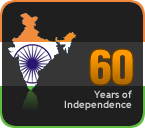 |
| Vishukanni this year at my great-granddaughter Arundati's home in Seattle |
This year, April 15 was VISHU -- the harvest festival, celebrated all over Kerala. Not only just Kerala. All over the world, wherever there is a Keralite, he definitely celebrates Vishu.
Each house in Kerala puts up a Vishukanni the previous night so that members of the family will be able to see it first thing in the morning, as soon as they get up. In every household, this Vishukanni is arranged by the oldest member of the family, in the pooja room, after all the youngsters have gone to bed.
Vishukanni means the first thing that one’s eyes see on Vishu day. It is all types of auspicious things, arranged, in front of an idol, or picture, of Sri Krishna. Since this is a harvest festival whatever is grown in one’s garden is placed there as an offering, like, bunches of mangoes, coconuts and jackfruits. Two brass lamps (nilavillakku) burn brightly on either side, adding to the lustre.
 |
| Vishukonnai - Courtesy keralapicturesgallery.wordpress.com |
Bunches of golden-yellow laburnum flowers decorate the display. April is the season when the laburnum blooms in south India. So profusely do they bloom, these trees hang down with their weight – it is a sight not easily forgotten. And that’s why laburnum is known as Vishukonnai in Kerala.
Gold and silver coins are arranged in rows alongside all these. Traditionally, these coins would be given to family members and all those who work for it – both in the household and outside. Nowadays, instead of gold and silver coins, cash is given and this is known as Vishu Kaineetam.
On Vishu morning this year, my thoughts went back to my childhood days and the Vishu of those times. In my younger days, I never saw my mother put up the Vishukanni. When we children were sent to bed there would be nothing to suggest that we would get a treat -- a surprise -- the next morning. Yes, the Vishukanni really was a treat for us children. Why children, it was a treat for one and all!!
My first memory of Vishu in our home was when I was four years old. Our mother woke us -- we three sisters and my younger brothers -- early in the morning, even before dawn, and led us one by one with her hands covering our eyes, taking us to the pooja room and seating us.
In our family the traditional Tamil New Year starts on Vishu day. The belief goes the year would be good or otherwise depending on the first face you see as you open your eyes on Vishu day.
Next our father handed over a gold coin to each one of us, but not for us to keep. We were asked to touch our eyes with it and give it back to our mother.
After that, each one of us got our Vishu Kaineetam -- one small silver coin called a Panam. Its value was one-seventh of a Rupee, or four Chakrams, for 28 Chakrams made a Rupee. This was the erstwhile Travancore State’s monetary system and the rupee was called the Sarkar Rupai. (We also had the British Monetary system too, with rupees annas and paisas; this was known as the British Rupai.) One Panam was just about 15 paisa of today! It was a huge amount for us and we felt very rich.
Next our father handed over a gold coin to each one of us, but not for us to keep. We were asked to touch our eyes with it and give it back to our mother.
After that, each one of us got our Vishu Kaineetam -- one small silver coin called a Panam. Its value was one-seventh of a Rupee, or four Chakrams, for 28 Chakrams made a Rupee. This was the erstwhile Travancore State’s monetary system and the rupee was called the Sarkar Rupai. (We also had the British Monetary system too, with rupees annas and paisas; this was known as the British Rupai.) One Panam was just about 15 paisa of today! It was a huge amount for us and we felt very rich.
We did our Namaskarams to God first and then to our parents after which we were let free for the day, to do whatever we wanted.
In the evening, our Athimbar, Mama, as also my mother’s uncles came over to give us Vishu Kaineetam, a Panam from each to each one of us. So by the end of the day we felt very, very rich. The rest of the evening was spent thinking what all to buy for ourselves the next day.
In those days a Rupee could get you a lot of things. For instance, a sovereign (gold coin) and a bag of rice (nearly 100 kilos) cost the same, about 12 to 13 rupees. A six-yard silk sari, woven with a lot of zari all over, cost 12 rupees, a six-yard cotton sari 3 rupees … no wonder we felt we were very rich with a Rupee each on Vishu day.
But, and it happened every Vishu, the next morning we felt no need to go and spend our money. So, before going to school, the money would be returned to our mother.
But, and it happened every Vishu, the next morning we felt no need to go and spend our money. So, before going to school, the money would be returned to our mother.
We had everything we needed thanks to our parents, especially in our mother’s storeroom, which was ever-filled with jars of goodies like murrukku, cheedai, and banana and jackfruit chips, along with sweets made with jaggery (sweets with sugar were rarely made at home on ordinary days).




